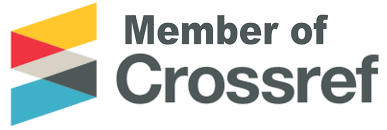Login to access subscriber-only resources.
Author Guideline
Effective Date: August 1, 2025
All manuscripts submitted to BitCurrency: A Journal of Digital Value and Money Services must adhere to the following requirements. Submissions not conforming to these guidelines may be returned to authors prior to peer review.
1. General Formatting Requirements
-
File formats: Microsoft Word (.doc/.docx), OpenOffice (.odt), or Rich Text Format (.rtf)
-
Font: Times New Roman, 12-point size
-
Spacing: Single-spaced text
-
Italics: Use italics instead of underlining (except for URLs)
-
Figures and Tables: Embed at the relevant point within the text, not at the end of the manuscript
-
Page numbers: Include in the footer
2. Structure of Manuscript
Manuscripts should be organized in the following order:
-
Title Page – Title of the manuscript, author(s), institutional affiliation(s), and corresponding author’s full contact details.
-
Abstract – Maximum of 250 words, typed on a separate page, concise, and without references.
-
Keywords – After the abstract, provide up to five keywords or brief phrases.
-
Main Text – Use a numbered heading format (e.g., 1., 1.1, 1.2) with clearly structured sections (e.g., Introduction, Methods, Results, Discussion).
-
Acknowledgments (if applicable).
-
References – Must follow the FedMSB Citation Standard, 1st Edition (see Section 3).
-
Appendices (optional).
3. References — FedMSB Citation Standard, 1st Edition
3.1 General Principles
-
References must be listed in the order they first appear in the text (order of appearance, not alphabetical).
-
Every reference listed must be cited in the text, and every in-text citation must have a corresponding reference list entry.
-
Blockchain references are permitted, including transaction hashes, smart contract addresses, block numbers, and decentralized storage identifiers (e.g., IPFS CIDs).
-
All blockchain references must indicate the network used (e.g., Ethereum Mainnet, Bitcoin Mainnet).
-
Provide resolvable links and access dates; archived snapshots (e.g., IPFS, Archive.org) are recommended for long-term accessibility.
3.2 Minimum Information Set for Blockchain References
For blockchain-related references, include:
-
Network name
-
Object type (Transaction, Contract, Block, Dataset, etc.)
-
Unique identifier (hash, address, block number, CID)
-
Resolvable link
-
Access date (YYYY-MM-DD)
-
Optional snapshot (IPFS CID, archive URL)
3.3 In-Text Citations
-
Use sequential numbering in square brackets: [1], [2], etc.
-
Place the citation number after punctuation.
Example: The earliest blockchain design was proposed by Nakamoto [1].
3.4 Reference Examples
Journal Article
- [1] Nakamoto, S. (2008). Bitcoin: A peer-to-peer electronic cash system. Journal of Cryptocurrency Research, 12(4), 45–67. https://doi.org/10.xxxx
Book
- [2] Tapscott, D., & Tapscott, A. (2016). Blockchain revolution: How the technology behind bitcoin is changing money, business, and the world. Penguin.
Blockchain Transaction Hash
- [3] Ethereum Mainnet. (2025, May 14). Smart contract deployment transaction. Tx hash: 0x5b9d6a...f3a8c4. https://etherscan.io/tx/0x5b9d6a...f3a8c4
Smart Contract Address
- [4] Ethereum Mainnet. (2025, May 14). USDC Smart Contract. Contract address: 0xA0b86991c6218b36c1d19D4a2e9Eb0cE3606eB48. https://etherscan.io/address/0xA0b86991c6218b36c1d19D4a2e9Eb0cE3606eB48
Block Number
- [5] Bitcoin Mainnet. (2025, Jan 20). Block #820340. https://mempool.space/block/00000000000000000001abcdef1234567890
IPFS CID
- [6] InterPlanetary File System (IPFS). (2025). Zero-knowledge proof documentation. CID: QmXoypizjW3WknFiJnKLwHCnL72vedxjQkDDP1mXWo6uco. https://ipfs.io/ipfs/QmXoypizjW3WknFiJnKLwHCnL72vedxjQkDDP1mXWo6uco
Pre-Submission Checklist for References:
-
References are in order of appearance.
-
Every in-text citation has a matching reference entry.
-
Every reference entry is cited in-text.
-
All blockchain references include the minimum required information.


